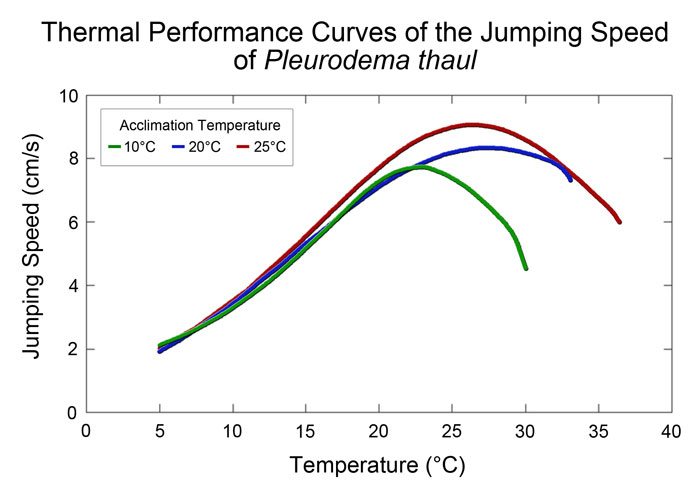| Tweet | Follow @co2science |
Paper Reviewed
Ruiz-Aravena, M., Gonzalez-Mendez, A., Estay, S.A., Gaitan-Espitia, J.D., Barria-Oyarzo, I., Bartheld, J.L. and Bacigalupe, L.D. 2014. Impact of global warming at the range margins: phenotypic plasticity and behavioral thermoregulation will buffer an endemic amphibian. Ecology and Evolution 4: 4467-4475.
Introducing their publication in Ecology and Evolution, Ruiz-Aravena et al. (2014) write that "when dispersal is not an option to evade warming temperatures, compensation through behavior, plasticity or evolutionary adaptation is essential to prevent extinction." And in this particular study, they go on to describe how they experimentally determined if there was significant physiological plasticity in the thermal performance curve (TPC) of maximum jumping speed in individuals of the northernmost population of the endemic frog Pleurodema thaul to enable the species survival in a significantly warmer world than that of the present.
After performing a number of tests designed to explore this question, as illustrated in the figure below, the seven scientists were able to answer it in the affirmative. In addition, they report that "even when dispersal is not possible for this population, the landscape is heterogeneous enough to offer opportunities for behavioral thermoregulation."

Jumping speed thermal performance curves for Pleurodema thaul under three different acclimation temperatures -- 10°C (green line), 20°C (blue line), and 25°C (red line). Adapted from Ruiz-Aravena et al. (2014).
All things considered, therefore, Ruiz-Aravena et al. confidently declare their results imply that "this population of Pleurodema thaul will be able to endure the worst projected scenario of climate warming [italics added for emphasis], as the species has not only the physiological capacities but also the environmental opportunities to regulate its temperature behaviorally."
And why are they so confident? The answer must run somewhat along the line of the old adage that if "there's more than one way to skin a cat," there's likely to be more than one way to ensure a species' survival in response to global warming. And the seven scientists appear to have found at least two such ways in which the Pleurodema thaul frog can take the heat that climate alarmists continue to claim is just around the corner ... if the still-ongoing 18-year "pause" in the warming ever kicks into gear again.
Posted 8 April 2015



